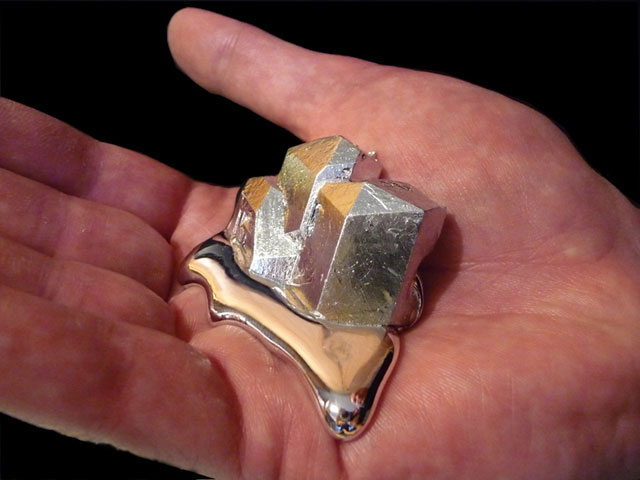Warning: Attempt to read property "Items" on bool in
/srv/users/ohthethingsyoucanbuy/apps/ohthethingsyoucanbuy/public/wp-content/themes/ohthetheme/inc/amazon-api.php on line
26
Warning: Attempt to read property "Item" on null in
/srv/users/ohthethingsyoucanbuy/apps/ohthethingsyoucanbuy/public/wp-content/themes/ohthetheme/inc/amazon-api.php on line
26
Warning: Attempt to read property "Items" on bool in
/srv/users/ohthethingsyoucanbuy/apps/ohthethingsyoucanbuy/public/wp-content/themes/ohthetheme/inc/amazon-api.php on line
36
Warning: Attempt to read property "Request" on null in
/srv/users/ohthethingsyoucanbuy/apps/ohthethingsyoucanbuy/public/wp-content/themes/ohthetheme/inc/amazon-api.php on line
36
Warning: Attempt to read property "Errors" on null in
/srv/users/ohthethingsyoucanbuy/apps/ohthethingsyoucanbuy/public/wp-content/themes/ohthetheme/inc/amazon-api.php on line
36
Warning: Attempt to read property "Error" on null in
/srv/users/ohthethingsyoucanbuy/apps/ohthethingsyoucanbuy/public/wp-content/themes/ohthetheme/inc/amazon-api.php on line
36
Warning: Attempt to read property "Code" on null in
/srv/users/ohthethingsyoucanbuy/apps/ohthethingsyoucanbuy/public/wp-content/themes/ohthetheme/inc/amazon-api.php on line
36
Warning: Attempt to read property "ItemAttributes" on null in
/srv/users/ohthethingsyoucanbuy/apps/ohthethingsyoucanbuy/public/wp-content/themes/ohthetheme/inc/amazon-api.php on line
40
Warning: Attempt to read property "Title" on null in
/srv/users/ohthethingsyoucanbuy/apps/ohthethingsyoucanbuy/public/wp-content/themes/ohthetheme/inc/amazon-api.php on line
40
Warning: Attempt to read property "DetailPageURL" on null in
/srv/users/ohthethingsyoucanbuy/apps/ohthethingsyoucanbuy/public/wp-content/themes/ohthetheme/inc/amazon-api.php on line
41
Warning: Attempt to read property "MediumImage" on null in
/srv/users/ohthethingsyoucanbuy/apps/ohthethingsyoucanbuy/public/wp-content/themes/ohthetheme/inc/amazon-api.php on line
42
Warning: Attempt to read property "URL" on null in
/srv/users/ohthethingsyoucanbuy/apps/ohthethingsyoucanbuy/public/wp-content/themes/ohthetheme/inc/amazon-api.php on line
42
Warning: Attempt to read property "Offers" on null in
/srv/users/ohthethingsyoucanbuy/apps/ohthethingsyoucanbuy/public/wp-content/themes/ohthetheme/inc/amazon-api.php on line
43
Warning: Attempt to read property "Offer" on null in
/srv/users/ohthethingsyoucanbuy/apps/ohthethingsyoucanbuy/public/wp-content/themes/ohthetheme/inc/amazon-api.php on line
43
Warning: Attempt to read property "OfferListing" on null in
/srv/users/ohthethingsyoucanbuy/apps/ohthethingsyoucanbuy/public/wp-content/themes/ohthetheme/inc/amazon-api.php on line
43
Warning: Attempt to read property "Price" on null in
/srv/users/ohthethingsyoucanbuy/apps/ohthethingsyoucanbuy/public/wp-content/themes/ohthetheme/inc/amazon-api.php on line
43
Warning: Attempt to read property "Amount" on null in
/srv/users/ohthethingsyoucanbuy/apps/ohthethingsyoucanbuy/public/wp-content/themes/ohthetheme/inc/amazon-api.php on line
43
Warning: Attempt to read property "Offers" on null in
/srv/users/ohthethingsyoucanbuy/apps/ohthethingsyoucanbuy/public/wp-content/themes/ohthetheme/inc/amazon-api.php on line
44
Warning: Attempt to read property "Offer" on null in
/srv/users/ohthethingsyoucanbuy/apps/ohthethingsyoucanbuy/public/wp-content/themes/ohthetheme/inc/amazon-api.php on line
44
Warning: Attempt to read property "OfferListing" on null in
/srv/users/ohthethingsyoucanbuy/apps/ohthethingsyoucanbuy/public/wp-content/themes/ohthetheme/inc/amazon-api.php on line
44
Warning: Attempt to read property "SalePrice" on null in
/srv/users/ohthethingsyoucanbuy/apps/ohthethingsyoucanbuy/public/wp-content/themes/ohthetheme/inc/amazon-api.php on line
44
Warning: Attempt to read property "Amount" on null in
/srv/users/ohthethingsyoucanbuy/apps/ohthethingsyoucanbuy/public/wp-content/themes/ohthetheme/inc/amazon-api.php on line
44
Warning: Attempt to read property "Offers" on null in
/srv/users/ohthethingsyoucanbuy/apps/ohthethingsyoucanbuy/public/wp-content/themes/ohthetheme/inc/amazon-api.php on line
45
Warning: Attempt to read property "Offer" on null in
/srv/users/ohthethingsyoucanbuy/apps/ohthethingsyoucanbuy/public/wp-content/themes/ohthetheme/inc/amazon-api.php on line
45
Warning: Attempt to read property "OfferListing" on null in
/srv/users/ohthethingsyoucanbuy/apps/ohthethingsyoucanbuy/public/wp-content/themes/ohthetheme/inc/amazon-api.php on line
45
Warning: Attempt to read property "Price" on null in
/srv/users/ohthethingsyoucanbuy/apps/ohthethingsyoucanbuy/public/wp-content/themes/ohthetheme/inc/amazon-api.php on line
45
Warning: Attempt to read property "CurrencyCode" on null in
/srv/users/ohthethingsyoucanbuy/apps/ohthethingsyoucanbuy/public/wp-content/themes/ohthetheme/inc/amazon-api.php on line
45
Warning: Attempt to read property "OfferSummary" on null in
/srv/users/ohthethingsyoucanbuy/apps/ohthethingsyoucanbuy/public/wp-content/themes/ohthetheme/inc/amazon-api.php on line
46
Warning: Attempt to read property "TotalNew" on null in
/srv/users/ohthethingsyoucanbuy/apps/ohthethingsyoucanbuy/public/wp-content/themes/ohthetheme/inc/amazon-api.php on line
46
Warning: Attempt to read property "Offers" on null in
/srv/users/ohthethingsyoucanbuy/apps/ohthethingsyoucanbuy/public/wp-content/themes/ohthetheme/inc/amazon-api.php on line
47
Warning: Attempt to read property "Offer" on null in
/srv/users/ohthethingsyoucanbuy/apps/ohthethingsyoucanbuy/public/wp-content/themes/ohthetheme/inc/amazon-api.php on line
47
Warning: Attempt to read property "OfferListing" on null in
/srv/users/ohthethingsyoucanbuy/apps/ohthethingsyoucanbuy/public/wp-content/themes/ohthetheme/inc/amazon-api.php on line
47
Warning: Attempt to read property "AvailabilityAttributes" on null in
/srv/users/ohthethingsyoucanbuy/apps/ohthethingsyoucanbuy/public/wp-content/themes/ohthetheme/inc/amazon-api.php on line
47
Warning: Attempt to read property "AvailabilityType" on null in
/srv/users/ohthethingsyoucanbuy/apps/ohthethingsyoucanbuy/public/wp-content/themes/ohthetheme/inc/amazon-api.php on line
47
Warning: Attempt to read property "ItemAttributes" on null in
/srv/users/ohthethingsyoucanbuy/apps/ohthethingsyoucanbuy/public/wp-content/themes/ohthetheme/inc/amazon-api.php on line
54
Warning: Attempt to read property "ListPrice" on null in
/srv/users/ohthethingsyoucanbuy/apps/ohthethingsyoucanbuy/public/wp-content/themes/ohthetheme/inc/amazon-api.php on line
54
Warning: Attempt to read property "Amount" on null in
/srv/users/ohthethingsyoucanbuy/apps/ohthethingsyoucanbuy/public/wp-content/themes/ohthetheme/inc/amazon-api.php on line
54
Warning: Attempt to read property "ItemAttributes" on null in
/srv/users/ohthethingsyoucanbuy/apps/ohthethingsyoucanbuy/public/wp-content/themes/ohthetheme/inc/amazon-api.php on line
55
Warning: Attempt to read property "ListPrice" on null in
/srv/users/ohthethingsyoucanbuy/apps/ohthethingsyoucanbuy/public/wp-content/themes/ohthetheme/inc/amazon-api.php on line
55
Warning: Attempt to read property "CurrencyCode" on null in
/srv/users/ohthethingsyoucanbuy/apps/ohthethingsyoucanbuy/public/wp-content/themes/ohthetheme/inc/amazon-api.php on line
55
Warning: Attempt to read property "OfferSummary" on null in
/srv/users/ohthethingsyoucanbuy/apps/ohthethingsyoucanbuy/public/wp-content/themes/ohthetheme/inc/amazon-api.php on line
59
Warning: Attempt to read property "LowestNewPrice" on null in
/srv/users/ohthethingsyoucanbuy/apps/ohthethingsyoucanbuy/public/wp-content/themes/ohthetheme/inc/amazon-api.php on line
59
Warning: Attempt to read property "Amount" on null in
/srv/users/ohthethingsyoucanbuy/apps/ohthethingsyoucanbuy/public/wp-content/themes/ohthetheme/inc/amazon-api.php on line
59
Warning: Attempt to read property "OfferSummary" on null in
/srv/users/ohthethingsyoucanbuy/apps/ohthethingsyoucanbuy/public/wp-content/themes/ohthetheme/inc/amazon-api.php on line
60
Warning: Attempt to read property "LowestNewPrice" on null in
/srv/users/ohthethingsyoucanbuy/apps/ohthethingsyoucanbuy/public/wp-content/themes/ohthetheme/inc/amazon-api.php on line
60
Warning: Attempt to read property "CurrencyCode" on null in
/srv/users/ohthethingsyoucanbuy/apps/ohthethingsyoucanbuy/public/wp-content/themes/ohthetheme/inc/amazon-api.php on line
60
Warning: Undefined array key "price" in
/srv/users/ohthethingsyoucanbuy/apps/ohthethingsyoucanbuy/public/wp-content/themes/ohthetheme/content-single-ott_products.php on line
36

